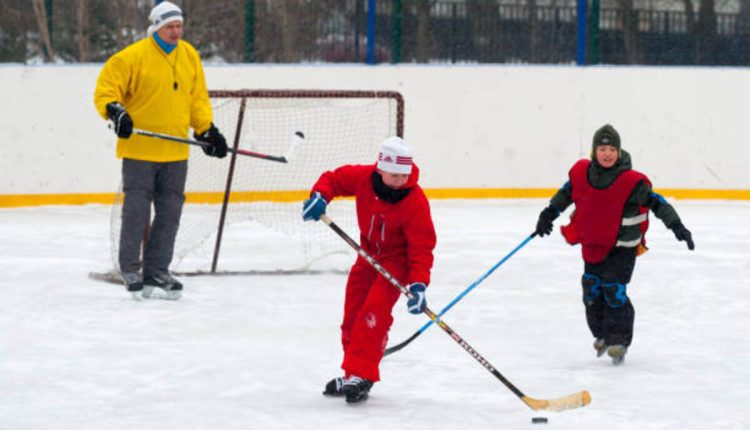Ice hockey is an exhilarating and rewarding sport that can provide children with long-term personal and athletic development benefits. To start learning the sport, the best place for beginners to begin would be with an informative free Learn to Play program.
This station-based program engages players through drills, miniature games, and controlled scrimmages designed to prepare them for enrollment in a 6U-8U hockey season-long program.
Learn to Skate
Skating provides an exciting and energetic way for kids ages three and older to promote healthy living, build confidence, pride, and focus, and develop life skills that foster long-term personal and athletic development. Ice hockey provides another form of team sport participation while building family participation and community spirit.
Learn to Skate USA is a comprehensive curriculum approved by U.S. Figure Skating, USA Hockey, and U.S. Speedskating that can teach your child how to skate with ten or 8-week sessions featuring 30 minutes of direct instruction plus at least 30 minutes of supervised free skate practice time. Every session also comes complete with a skate rental and one public skate pass redeemable during that session.
Pre Tot is a pre-requisite to Snowplow Sam 1. It introduces toddlers to the joys of skating at an age-appropriate class and builds upon what was learned in Snowplow Sam 1. After completing Pre-Tot, your child will be ready for enrollment into regular Learn to Skate USA sessions. Our professional instructors will evaluate participants during the first two weeks of every session to place them at an appropriate level. Participants must also wear helmets; we suggest hockey, ski, or bike helmets as suitable options.
Learn to Play
Hockey is an exhilarating, fast-paced sport that fosters physical fitness, teamwork, and leadership development. Additionally, hockey helps children explore more about their world while teaching valuable life lessons – making it an excellent activity together! Give it a try now with friends or family members!
A typical field hockey match usually lasts 60 minutes and is broken into four quarters of 15 minutes each. Teams compete against one another to win by scoring goals; each section contains 11 players on its roster, including ten field players and one goalkeeper – commonly classified as defenders, midfielders, and strikers. A referee monitors play to ensure compliance with rules such as time wasting. Penalties may be issued to players violating these laws or failing to play by their powers during a match.
If you’re new to hockey, enrolling in a Learn to Play program at your local rink could be helpful. These programs are tailored specifically for children who have never tried out hockey, providing an environment where they can develop basic skating and stick-handling skills in a safe setting. Learn to Play programs typically last eight instructor-led on-ice sessions during which participants receive their hockey equipment. Once the fundamentals have been learned, move on to team league play.
Join a Team
Hockey can be an immensely satisfying sport for children. It teaches invaluable life lessons like teamwork, leadership, and sportsmanship while offering them thrills such as scoring a goal or making new friends – just some of its many advantages.
No matter where your child stands on their hockey journey, programs are designed to aid their development in the game. Local youth associations offer recreational leagues with weekly sessions using station-based skills models from USA Hockey designed to teach according to your child’s abilities and help turn weaknesses into strengths.
Travel ice hockey programs offer kids who wish to compete at a higher level a way of competing that differs from local leagues. These teams take part in out-of-town tournaments. Children interested in this option should participate in a tryout session before signing up with this option.
As kids age and develop in hockey, they may decide to specialize. To do so, they will require an expensive set of gear, which may cost several thousand dollars; scholarships may be available for families needing help paying these expenses.
Equipment
Ice hockey is a fast-paced, hard-hitting sport. Players wear multiple layers of protective equipment to lessen the risk of serious injury. But initially, wearing all this gear can be intimidating for newcomers–particularly kids just beginning their skating journey–so this guide aims to assist new players to experience hockey safely.
New players should start by purchasing a pair of ice hockey skates designed to suit hockey rather than figure skating (they should feature a round tip), which fits comfortably while remaining snug during play and is tightly laced to prevent coming undone during gameplay. A helmet equipped with a facemask provides added safety, protecting from blows to your head that could come from opposing player sticks or objects on the sidelines and watching from potential head trauma should they become injured on the ice surface.
Mouthguards should also be worn to safeguard against injuries to both teeth and gums, chest protectors, elbow pads, heavily padded shorts with padding underneath, an athletic protector called ‘jocks’ as well as shin pads will all provide added protection from impact with other players.
Pads not only reduce injury risks, but they will also enable players to move more freely on the ice and increase their game. Other essential items for hockey include stick bags, equipment boxes, and hockey tape for sticks and jerseys – when purchasing these items, children are advised to try them in-store to ensure a proper fit and comfort level.


